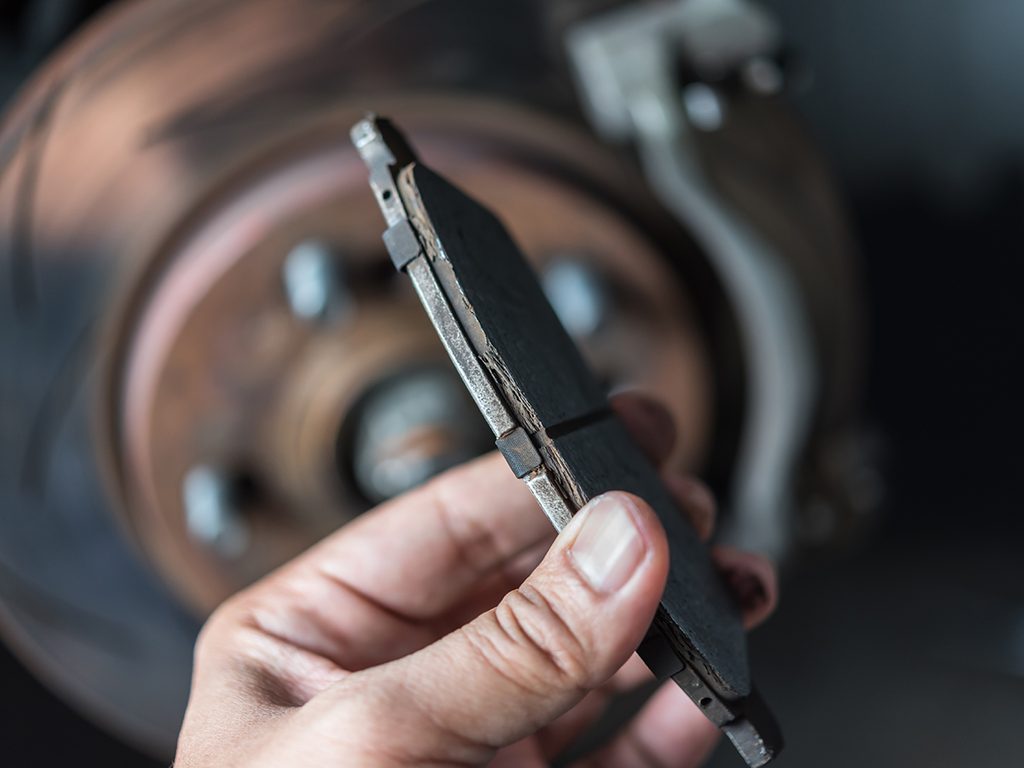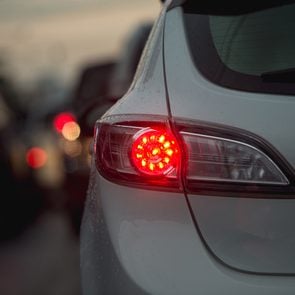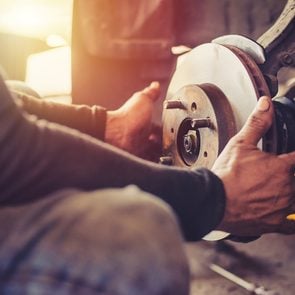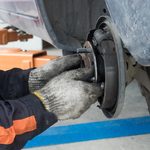How Often Should You Change Your Brake Pads?

How often should you change your brake pads? The answer depends on the unique combination of your vehicle and typical terrain, as well as the habits of those who often drive it.
Any mechanic will tell you that it’s time to change your brake pads when the lining is in the 3 mm to 4 mm range.
For context, know that the standard thickness of new brake linings is 12 mm. The first half of your brake pad’s lifespan is usually carefree. As it wears past 6 mm, though, listen for the sign that it’s time. Brake pads incorporate a metal burr that contacts the rotor at 3 mm, causing a squeal that signals you to service the brakes.
Don’t ignore this squeal. Ignoring this warning results in damage to the rotors, at first scoring, then overheating, and potentially even warping them as the pads wear to nothing. Ideally, you’ll catch them before you hear that telltale squeal, so you can save your rotors and budget accordingly. (Here are more strange car noises, decoded.)
How to monitor brake pads
Overall, it’s a good idea to check the brake pad lining thickness every time you change the oil. Most shops that do brakes will automatically check them for you when you change your oil, as they look to sell additional services. Once down in the 3 mm to 4 mm range, that squeal isn’t far away. Go ahead and schedule some time to get them replaced.
One real-life example: The ceramic brake pad linings on my SUV were measured after 11 months of use (at approximately 37,000 kilometres/year) and showed 7 mm remaining. Although this is still considered within the “good” range (first 6 mm of wear), I’ll keep a closer eye on these pads going forward as they progress through the last half of their useful lifespan.
How long does it take to wear out brake pads?
It depends upon a couple of things: Your driving habits and the material your brake pad lining is made from.
Speeding, last-second braking and kilometres driven either around town or in stop-and-go traffic (verses highway miles) all affect how fast your brake pads wear out. Furthermore, driving in mountainous country, where constant downhill braking is necessary, also adds wear to your poor, old brake pads.
Softer brake-lining materials, such as organics, tend to wear down faster, requiring replacement more often. Metallics tend to wear on the rotors more heavily. Ceramics combine the best aspects of the two, but cost more. Consider that good information that doesn’t help you once your pads are worn, but can help inform your brake pad replacement choice. (Here’s the best maintenance schedule to follow for good car health.)
Glazed brake pads are unsafe
Damaged through overheating, glazed brake pads provide little friction for stopping the brake rotors and have become dangerous. This can happen if you fast-brake in an emergency or ride the brakes for an extended period of time. They’ll have a smooth-feeling surface that can be shiny or crystallized in appearance. You may also notice that the vehicle’s stopping distance has increased—often significantly. No matter their thickness, if your brake pads are glazed, get them changed ASAP.
Next, find out when you should (and shouldn’t) be using your emergency brake.






